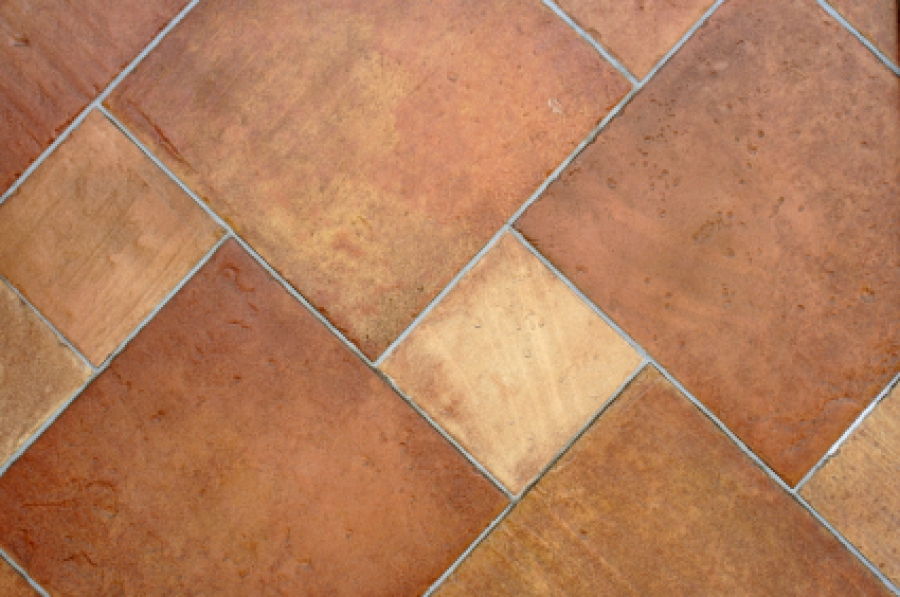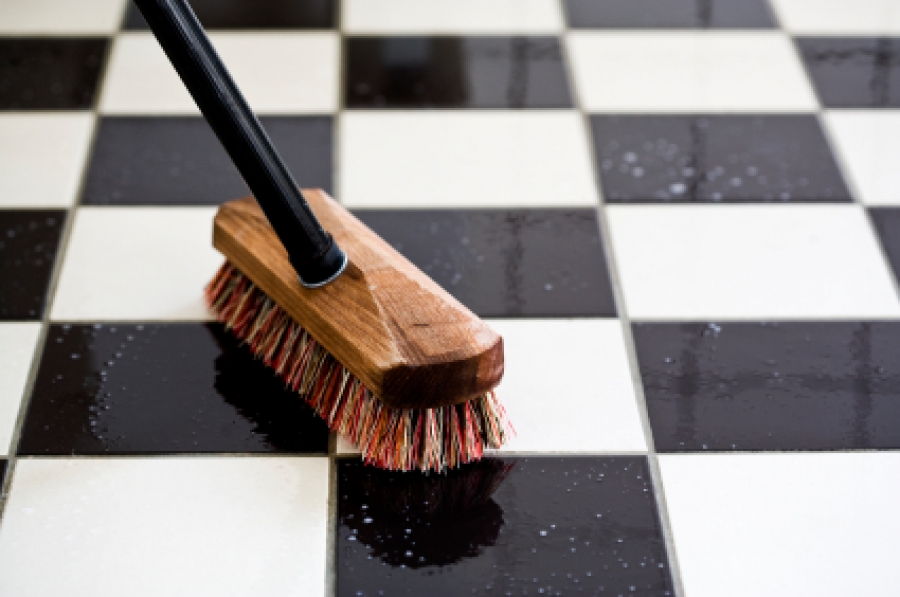瓷砖地板101:瓷砖地板的种类
Tile flooring is manufactured from a variety of materials such as clay, stone, metal, terrazzo, and quartz. Each type of tile flooring has its own defining characteristics. Generally speaking, the two most commonly used types of tile flooring are ceramic and natural stone.

瓷砖
瓷砖从被开采,制备,然后形成到模具中的粘土材料制造。用于瓷砖成型常见的方法包括干压,挤出,和搪塑模具。干式压制成型方法涉及被压入在极端压力下的模具干燥材料的混合物。当微湿材料的混合物被挤压到模具中,形成挤出瓷砖。搪塑模具的成形方法,其中,非常湿材料的混合物倒入模具中,然后在窑硬化在非常高的温度。
Porcelain vs. Non-Porcelain
瓷砖可以最好地表征为瓷或非瓷。传统的瓷砖是非瓷并从白色,红色,和/或褐色粘土和其它矿物制成。瓷瓷砖由粘土和矿物质制成为好,但它也包含了一个白色的灰尘或沙子叫长石50%。长石是一种类型的晶体的岩石中发现,作为在窑干燥处理的“通量”,熔成玻璃状材料和结合所有的模塑配料一起。小的修改,以瓷砖的成分或窑干燥过程(即,温度和窑的类型)中创建的外观巨大的品种和生产瓷砖地板产品的特性。
Porcelain and non-porcelain ceramic tile can be either unglazed or glazed. Glazed tile has a matte, semi-gloss, or high-gloss finish applied to the surface during the manufacturing process. In the past, glazed tile was kiln-fired twice, once to harden the tile mold and a second time to harden the glaze. Today, in addition to double-fired ceramic tiles, an automated single-fired manufacturing process called Monocuttura hardens a glazed mold in one step. Glazed tiles have increased stain resistance, scratch resistance, and traction, as well as decreased water absorption, in comparison to an unglazed tile.
非瓷器,瓷砖是最经济类型的瓷砖地板之中。瓷陶瓷地板是比非瓷更加昂贵,并且也很难与工作。然而,它提供了更大的耐用性,天然的耐污性,最少的水吸收,并通过健全的颜色。许多类型的瓦都以类似的方式,以瓷砖制造,但它们是不太常见的。这些包括砖,水泥,玻璃,蜡画,萨尔蒂约,和陶土瓦。变化的材料和制造工艺创造独特的产品特性。
天然石材瓷砖
天然石材瓷砖从被开采,制成片,成品,并切成大小的天然材料制作而成。作为常见的石材种类地板瓦片包括花岗岩,大理石,石灰石(含石灰)和石板。在这些类型的天然石材有上千个品种与靠里的石头被开采以及何时特点。
花岗岩is a type of igneous rock that is very dense and hard. Its distinctive appearance is due to speckled minerals found within the rock, its unique veining, and the thousands of available colors. Granite is nearly impervious and, once it is polished, resists scratching. It is an excellent choice for flooring inkitchens和high-traffic areas.
大理石is a type of metamorphic rock that has rich veining and is available in a variety of colors. Marble is more porous than granite and is not recommended for kitchen flooring unless honed and then sealed on a regular basis.
Limestone是一种沉积岩,提供了一个朴实的外观光亮和黑暗的阴影。表面可以被纹理化或光滑抛光。石灰石比大理石和花岗岩密度小。它可以很容易染色,并且还容易产生划伤。不推荐用于厨房或高流量地板应用。
洞石是提供了一个不同寻常的结晶外观配上土色系一种类型的石灰石。石灰是一种软的,多孔石与具有点蚀或凹洞的自然表面。甲珩磨或抛光的表面能填充表面空隙之后实现。洞不建议厨房的地板,因为它很容易被划伤和染色。优抚表面密封必须保持钙华。
石板是一种变质岩,是非常密集,非常耐用。板岩是在较暗的泥土色调可用。石板的表面被纹理化自然除非平稳,磨练光洁度实现。板岩是厨房和高流量区域地板的绝佳选择。
天然石材瓷砖表面涂饰
The face of stone tile flooring typically has one of three types of finishes applied: natural, honed, or polished. The finishing process of natural stone begins once the stone is quarried and cut into a rough slab. The rough slab face is polished with abrasive pads. Extremely coarse abrasive pads are used first, then less coarse pads are used until the final buffing. The tiles are then cut to size by a stone fabricator. The surface finish you apply will depend on where you intend to use the stone tile and the desired appearance. Natural surfaces are unfinished and have an earthy, dull appearance. Texture and pitting are visible characteristics of natural stone tile. Honed surfaces are achieved by terminating the finish process prior to buffing. The smooth, matte appearance is excellent for high-traffic and wet areas to prevent slipping and wear. Polished surfaces are highly reflective with a mirror-like finish. The process of achieving a polished finish is a benefit to the porosity of stone tile, creating an almost impervious surface. However, it also creates a more slippery surface. In addition to these common types of finishes, other types are available that offer distinctive appearances and present their own advantages and disadvantages. Depending on the type of stone tile you choose and its intended application, you might opt for one of the other surface finish types. It is best to consult with a stone fabricator to determine the best surface finish for your project.

杰夫Calcamuggio
Jeff is an Editor-at-Large for Buildipedia.com who writes and edits Featured At Home and Knowledgebase content. Prior to joining Buildipedia, Jeff's work experience included carpentry, construction documentation, specification writing, construction administration, project management, and real estate property inspection. Jeff is a member of the Construction Specifications Institute (CSI) and an educator at Columbus State Community College and enjoys challenging DIY home improvement projects.




